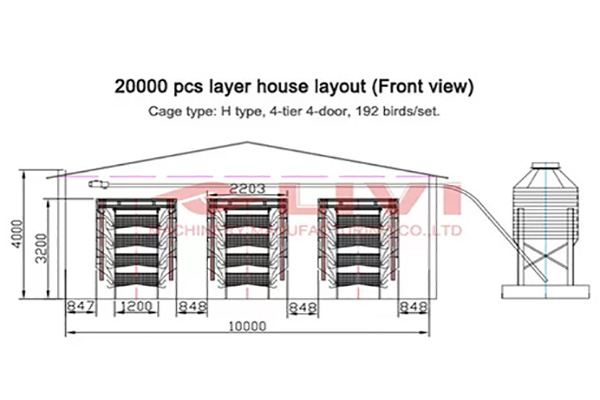Maximizing Efficiency: Automated Environmental Control System in Uganda Chicken Farms
Time : 2025-04-27
In the bustling poultry industry of Uganda, keeping chickens healthy and productive is the ultimate goal for every farmer. With the introduction of advanced automated environmental control systems, this goal has become more achievable than ever before. Let’s dive into how these systems are revolutionizing the way Uganda’s chicken farms operate.
The Evolution of Chicken Farming in Uganda
Uganda’s chicken farming sector has seen remarkable growth over the past few years. The country has become a significant producer of chicken meat and eggs, thanks to improved farming techniques and technology. However, traditional farming methods still prevail in many areas, leading to suboptimal conditions for the chickens.
What is an Automated Environmental Control System?
An automated environmental control system (AECS) is a technological marvel designed to monitor and regulate various environmental factors within chicken coops. This includes temperature, humidity, ventilation, and lighting, all of which play a crucial role in chicken health and productivity.
The Importance of Environment in Chicken Farming
Chickens are highly sensitive to their surroundings. A poorly managed environment can lead to a variety of issues, such as reduced egg production, increased disease outbreaks, and overall poor growth. That’s where an AECS comes into play.
How Does an AECS Work?
The AECS works by integrating a series of sensors that monitor environmental conditions within the coop. When these conditions deviate from the desired setpoints, the system automatically adjusts the heating, cooling, ventilation, and lighting to bring the environment back into the optimal range.
Benefits of Using an AECS in Uganda Chicken Farms
1. Enhanced Productivity: By maintaining a consistent and optimal environment, AECS can significantly boost the productivity of your chicken farm. You’ll see an increase in egg production, faster growth rates, and overall better health of the flock.
2. Reduced Disease Risk: A well-regulated environment can significantly lower the risk of disease outbreaks. This is crucial, especially in regions prone to avian influenza and other poultry diseases.
3. Energy Efficiency: Modern AECS can save energy costs by precisely controlling heating, cooling, and ventilation. This not only reduces your operational expenses but also helps in preserving the environment.
4. Ease of Use: Many AECS are designed to be user-friendly, with easy-to-understand interfaces and remote access capabilities. This allows farmers to manage their farms from anywhere, at any time.
Implementing an AECS in Your Chicken Farm
Transitioning to an AECS may seem daunting, but with the right approach, it can be a smooth process. Here are some tips to get started:
1. Research and Select the Right System: There are many AECS available on the market. It’s essential to research and select a system that fits your specific needs and budget.
2. Training: Ensure that your farm staff is well-trained to use and maintain the system. This will ensure that it operates effectively and efficiently.
3. Integration with Existing Infrastructure: Ensure that the AECS can be integrated with your existing farm infrastructure, such as feeders, waterers, and egg collection systems.
4. Regular Maintenance: Regular maintenance of the AECS is crucial to ensure that it continues to operate optimally.
Case Studies: Success Stories from Uganda
Several Uganda chicken farms have already implemented AECS and are witnessing the benefits firsthand. Here are a few success stories:
1. Bukomansimbi Chicken Farm: After installing an AECS, the farm’s egg production increased by 20%, and the mortality rate decreased by 30%.
2. Mukono Chicken Coop: The implementation of an AECS helped reduce the farm’s energy consumption by 15%, resulting in significant cost savings.
3. Wakiso Chicken Farm: The AECS helped the farm manage temperature fluctuations, leading to better growth rates and a healthier flock.
Conclusion
An automated environmental control system is a game-changer for Uganda’s chicken farming industry. By investing in this technology, farmers can enjoy improved productivity, reduced disease risks, and significant cost savings. So, if you’re looking to take your chicken farm to the next level, it’s time to consider an AECS.
—












